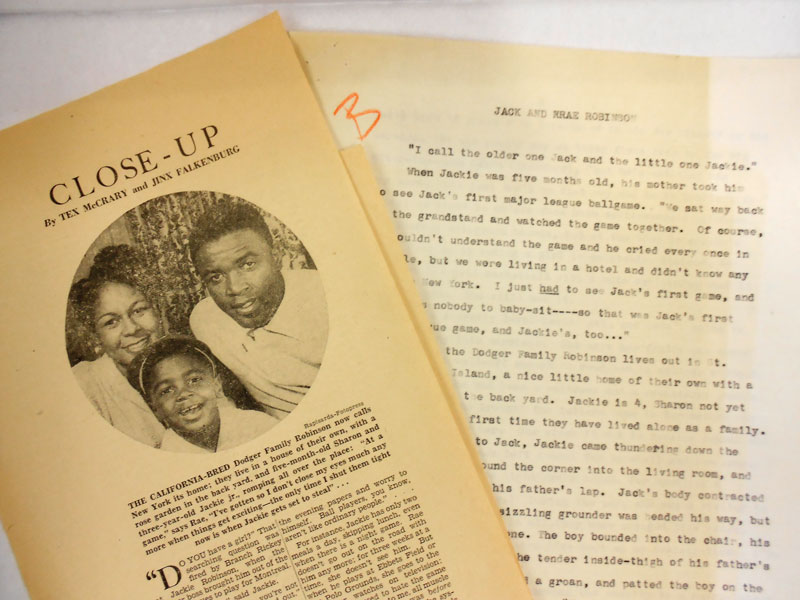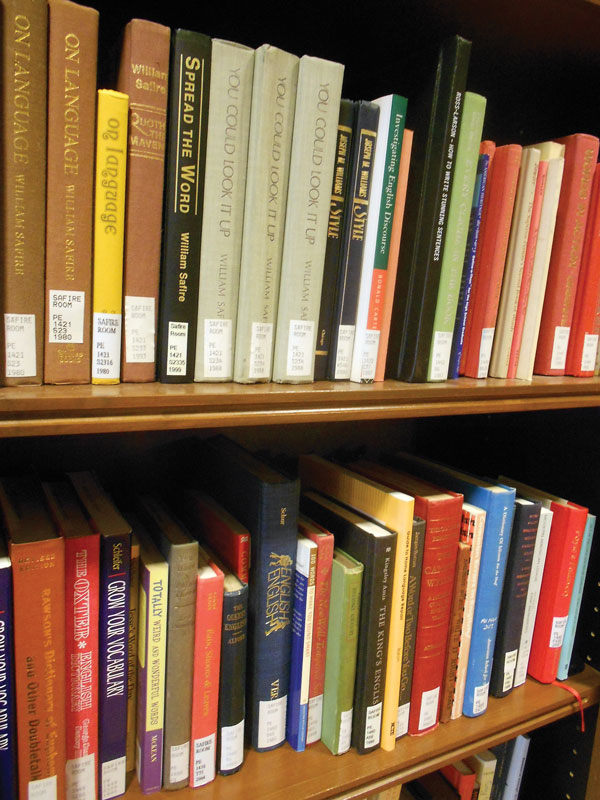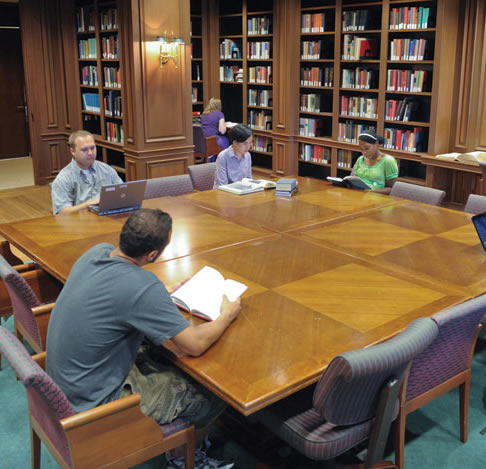On Safire
An archivist at Syracuse University Library delves into the late columnist’s correspondence and research files By Amber L. Moore Amber L. Moore is an archivist at the Special Collections Research Center located at Syracuse University.
William Safire was a man of many careers: Pulitzer Prize–winning columnist, presidential speechwriter, reporter, public relations executive, novelist, lexicographer, and philanthropist—all of which are reflected in his personal papers on deposit at Syracuse University Library (SUL). Early last year, the library received a grant of $86,000 from the Dana Foundation, a philanthropic organization supporting brain science once chaired by Safire, to hire a full-time archivist to process Safire’s papers and catalogue books from his personal library. The collection, approximately two hundred and fifty linear feet, contains many gems that illuminate the professional, personal, and public interests of the late New York Times columnist.
Syracuse is the perfect place for Safire’s papers due to his long-standing relationship with the university. He enrolled as an undergraduate with the class of 1951 but only stayed through his sophomore year. He later received an honorary degree from Syracuse in 1978, noting in his commencement speech to the class, “There is hope for slow learners.” He served on the university’s board of trustees and endowed a quiet study room on the sixth floor of SU’s Bird Library in the 1990s that holds books from his personal collection, some of which are rare, including a 1663 edition of Nicolas Caussin’s The Holy Court in Five Tomes. Safire’s family deposited the bulk of his papers with SUL in 2010, the year after his death from pancreatic cancer.
As the newly appointed Safire archivist, I first became acquainted with the collection on a hot summer day in July 2011. My supervisor, Michele Combs, brought me to an off-site facility that contained hundreds of boxes of Safire’s papers, books, and scrapbooks. At first glance, the collection seemed massive and unruly. The non-archival shipping boxes that housed the papers were stacked high on ten pallets, but upon closer examination—and much to my delight—I realized that all the boxes were clearly labeled and grouped together in a relatively logical manner. I quickly got a feel for the original order of the papers and spent the next couple of days grouping like boxes and determining preliminary series for the collection.
The papers reveal many interesting aspects of Safire’s careers as a reporter and a public relations executive prior to his tenure with the New York Times. After dropping out of college, Safire was hired by public relations man Tex McCrary as a researcher and writer at the New York Herald Tribune. He wrote for the paper’s “Close-Up” column, where he interviewed many celebrities, such as Jackie Robinson and Marlon Brando. Although Safire performed much of the legwork for McCrary, he did not always have an easy time gathering usable material from his subjects. During one particular interview with Broadway producer George Abbott, Safire’s typewritten notes state that the “interview was long on chatter and short on material,” adding “whenever I would ask him a hot question, he would lean back in his chair, smile and say, ‘No, I don’t think I’m ready to bare my soul to the press.’”













